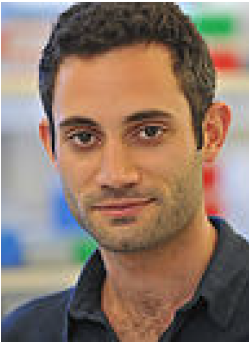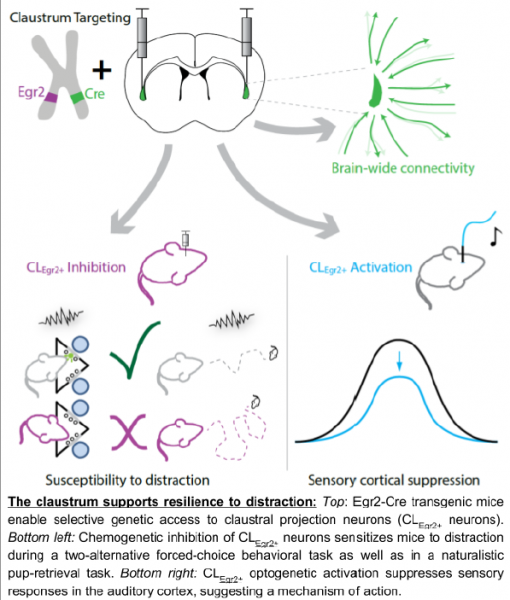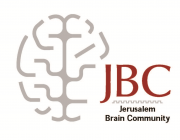Congratulations to Gal Atlan and Anna Terem (Nudler) for winning the January 2019 JBC SMART Brain Prize for the outstanding article: “The claustrum supports resilience to distraction”, published in Current Biology in September 2018.
 Gal Atlan - is a PhD student in the computational neuroscience program of the Edmond and Lily Safra Center for Brain Sciences (ELSC). His dissertation research program, in the lab of Dr. Ami Citri, focuses on the interactions between cortical circuits and the claustrum, and the role of the claustrum in attentional processes. He combines genetic viral tools, with electrophysiology and calcium fiber photometry to genetically access, manipulate, and record the activity of sub-populations of claustral neurons in awake mice during rest and behavior. The claustrum is an understudied hub of neural connectivity, and characterizing its role in regulating sensory coherence could shed light on pathologies such as Autism and ADHD.
Gal Atlan - is a PhD student in the computational neuroscience program of the Edmond and Lily Safra Center for Brain Sciences (ELSC). His dissertation research program, in the lab of Dr. Ami Citri, focuses on the interactions between cortical circuits and the claustrum, and the role of the claustrum in attentional processes. He combines genetic viral tools, with electrophysiology and calcium fiber photometry to genetically access, manipulate, and record the activity of sub-populations of claustral neurons in awake mice during rest and behavior. The claustrum is an understudied hub of neural connectivity, and characterizing its role in regulating sensory coherence could shed light on pathologies such as Autism and ADHD.
 Anna Terem (Nudler) - is a PhD student in the MADA program of the Life Science Institute in the Faculty of Natural Sciences. Her dissertation research program, in the lab of Dr. Ami Citri's focuses on a comprehensive characterization of the role dopamine plays in the claustrum. Dopamine is a key factor in both reward and attention, however its underlying functional role and circuitry in the claustrum are poorly understood. Understanding the role of dopamine in regulating claustral function is anticipated to provide insight in the mechanisms underlying attention and reward, and potentially support novel diagnostic and therapeutic opportunities with in the context of substance abuse and attention deficit disorders.
Anna Terem (Nudler) - is a PhD student in the MADA program of the Life Science Institute in the Faculty of Natural Sciences. Her dissertation research program, in the lab of Dr. Ami Citri's focuses on a comprehensive characterization of the role dopamine plays in the claustrum. Dopamine is a key factor in both reward and attention, however its underlying functional role and circuitry in the claustrum are poorly understood. Understanding the role of dopamine in regulating claustral function is anticipated to provide insight in the mechanisms underlying attention and reward, and potentially support novel diagnostic and therapeutic opportunities with in the context of substance abuse and attention deficit disorders.
We are constantly barraged by sensory information. While only a fraction of this information is deemed relevant and reaches our perception, the majority is suppressed. The neural mechanisms behind this key ability to ignore distractions are largely unknown. In this publication we provide evidence that the claustrum, a neural hub with vast brain-wide connectivity, is a major node in the circuitry supporting resilience to distraction. A major obstacle in assaying the function of the claustrum has been its thin and elongated anatomy. We characterized a genetic approach for accessing claustral neurons, supporting the first functional investigation of the claustrum. Our results revealed a role for the claustrum in filtering irrelevant sensory distractors. Furthermore, we demonstrate a possible mechanism for the action of the claustrum, through suppression of cortical sensory responses.


